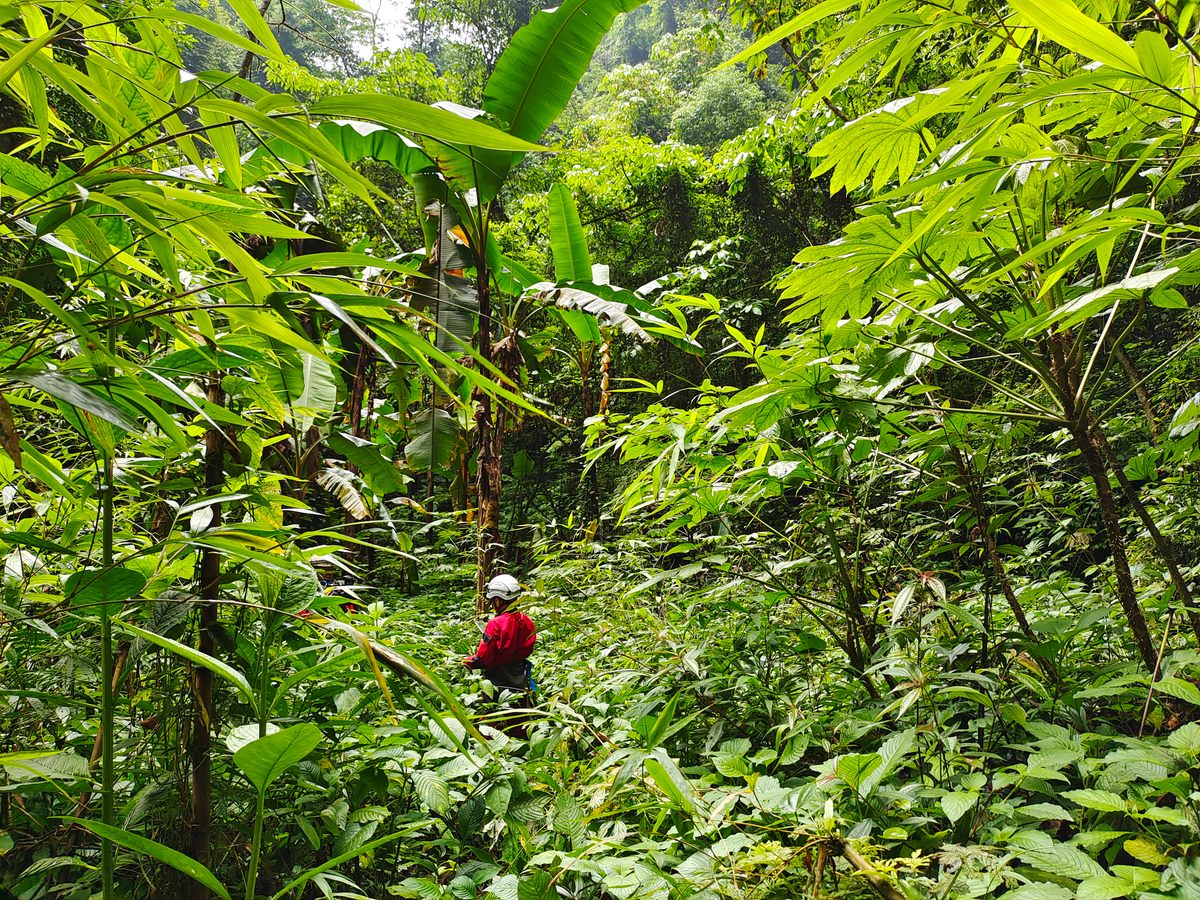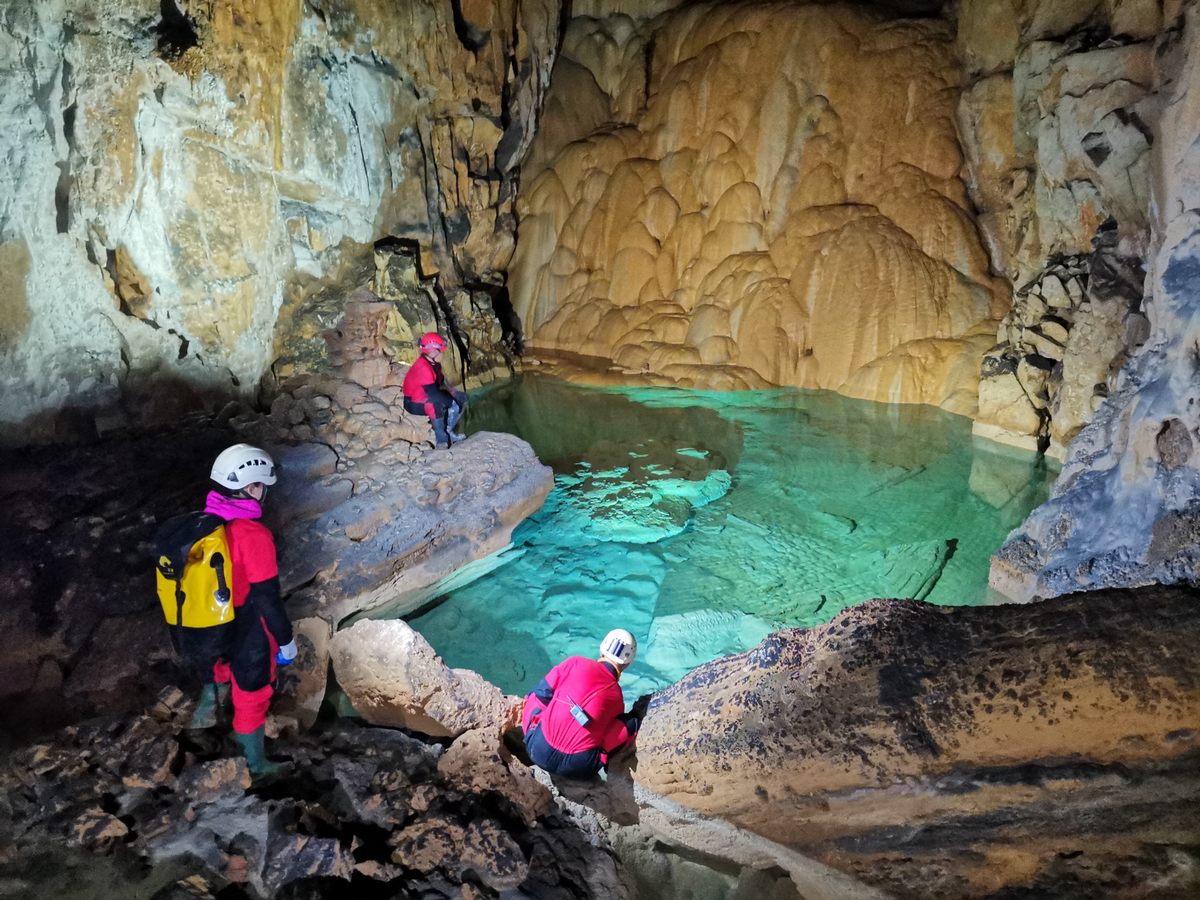
The residents of Leye County in South China's Guangxi Zhuang Autonomous Region are no strangers to sinkholes. The area's 29 majestic sinkholes and underground caves have earned themselves a UNESCO World Heritage Site designation. But the one explored by scientists in early May 2022 harbored an extraordinary secret — a pristinely-preserved ancient forest.
Lixin Chen, founder of the Guangxi 702 Cave Expedition Club, and his team first descended inside the massive chasm on May 6, 2022. It did not take them long to reach firm ground to walk on. But the group soon realized they were nowhere close to the bottom of the 630-foot-deep sinkhole. They had to traverse through a dense undergrowth of lush green vines and trees as high as 130 feet for a few hours to get there.

Chen told Atlas Obscura that the environment reminded him of a scene from the movie Avatar. "The tree vines were entangling us like spider webs, and you have no idea how deep your next step was going to be," he says. "The plants were so brittle that you could pull them down with your hands, but they'd recover just as quick. When we came back [up], the path was hidden again."
The scientists have since returned to the sinkhole which they named "The Eagle" several times. They have found three collapsed caves, evidence of an ancient underground river, and a small underground lake. Chen says, "I wouldn't be surprised to know that there are species found in these caves that have never been reported or described by science until now."

Tiankeng, or "heavenly pit," the Mandarin name for these enormous sinkholes, is a common feature of karst terrain. The natural landscapes primarily comprise carbonate rocks like limestone and dolomite. When rainwater falls on the rocks, a chemical reaction causes small cracks and tunnels to start forming in the rock structure. Over time, these cracks widen due to erosion and eventually collapse in on themselves, opening up giant sinkholes or caves.
The sinkholes, left undisturbed by human activity, can be an oasis for life, especially for previously unknown species. The massive chasms are also a conduit to underground water reservoirs, or aquifers. Karst aquifers are the primary water source for over 700 million people worldwide.
Resources: Smithsonianmag.com, Livescience.com, Unesco.org
